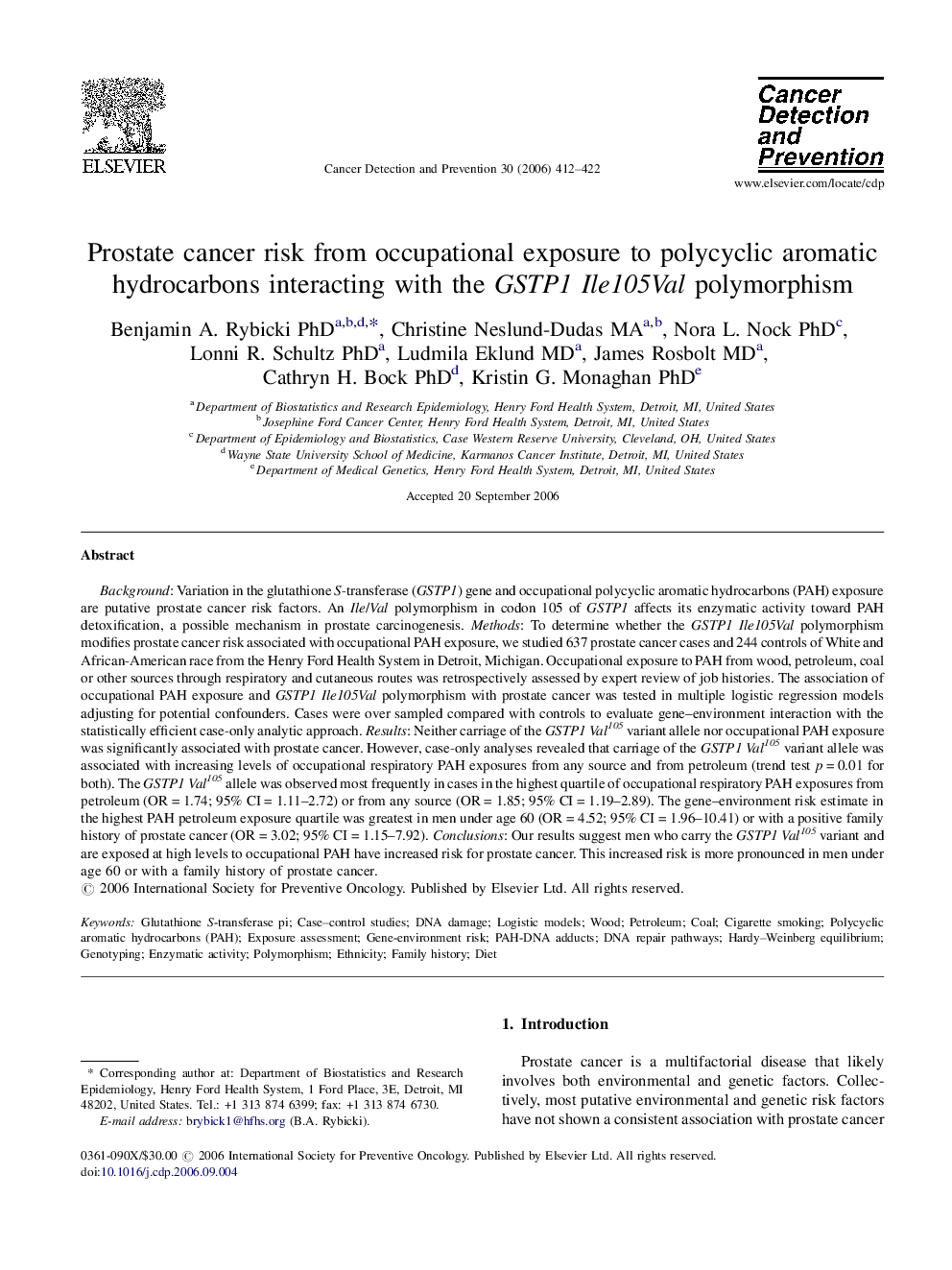| کد مقاله | کد نشریه | سال انتشار | مقاله انگلیسی | نسخه تمام متن |
|---|---|---|---|---|
| 2108734 | 1083808 | 2006 | 11 صفحه PDF | دانلود رایگان |

Background: Variation in the glutathione S-transferase (GSTP1) gene and occupational polycyclic aromatic hydrocarbons (PAH) exposure are putative prostate cancer risk factors. An Ile/Val polymorphism in codon 105 of GSTP1 affects its enzymatic activity toward PAH detoxification, a possible mechanism in prostate carcinogenesis. Methods: To determine whether the GSTP1 Ile105Val polymorphism modifies prostate cancer risk associated with occupational PAH exposure, we studied 637 prostate cancer cases and 244 controls of White and African-American race from the Henry Ford Health System in Detroit, Michigan. Occupational exposure to PAH from wood, petroleum, coal or other sources through respiratory and cutaneous routes was retrospectively assessed by expert review of job histories. The association of occupational PAH exposure and GSTP1 Ile105Val polymorphism with prostate cancer was tested in multiple logistic regression models adjusting for potential confounders. Cases were over sampled compared with controls to evaluate gene–environment interaction with the statistically efficient case-only analytic approach. Results: Neither carriage of the GSTP1 Val105 variant allele nor occupational PAH exposure was significantly associated with prostate cancer. However, case-only analyses revealed that carriage of the GSTP1 Val105 variant allele was associated with increasing levels of occupational respiratory PAH exposures from any source and from petroleum (trend test p = 0.01 for both). The GSTP1 Val105 allele was observed most frequently in cases in the highest quartile of occupational respiratory PAH exposures from petroleum (OR = 1.74; 95% CI = 1.11–2.72) or from any source (OR = 1.85; 95% CI = 1.19–2.89). The gene–environment risk estimate in the highest PAH petroleum exposure quartile was greatest in men under age 60 (OR = 4.52; 95% CI = 1.96–10.41) or with a positive family history of prostate cancer (OR = 3.02; 95% CI = 1.15–7.92). Conclusions: Our results suggest men who carry the GSTP1 Val105 variant and are exposed at high levels to occupational PAH have increased risk for prostate cancer. This increased risk is more pronounced in men under age 60 or with a family history of prostate cancer.
Journal: Cancer Detection and Prevention - Volume 30, Issue 5, 2006, Pages 412–422